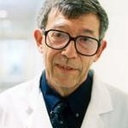Sleepwalking and sleep terrors in prepubertal children: what triggers them?
Ключевые слова
абстрактный
OBJECTIVE
To evaluate the clinical presentation and polysomnography of prepubertal children with repetitive sleep terrors and sleepwalking, to compare them with a control group, and to evaluate the treatment of associated sleep disorders.
METHODS
Patients with complaint of sleep terrors with or without sleepwalking were studied retrospectively. A control group was also recruited. Each subject received a standardized evaluation, which included the following: 1) Pediatric Sleep Questionnaire; 2) interview regarding child's medical and sociofamilial history, orthodontic history, schooling, psychological difficulties, medication intake, and family history of medical and sleep disorders; 3) general pediatric physical examination and neurologic, otolaryngological, and craniofacial examination by a specialist; 4) obtaining medical history on variables relevant to early life sleep disorders; 5) polysomnography, which included electroencephalogram (EEG; C3/A2, Fp1/T1, T1/O1, O1/C3, C4/A1, Fp2/T2, T2/O2, O2/C4), chin and leg electromyelogram, right and left electro-oculogram, and electrocardiogram (modified V2 lead); respiration was monitored with a nasal cannula/pressure transducer system, mouth thermistor, chest and abdominal bands, pulse oximeter, and neck microphone; respiratory effort was monitored with calibrated esophageal manometry; variables were collected on a computerized sleep system; and 6) available family members with a positive history of sleep terrors and sleepwalking received clinical evaluations similar to those used for index cases; they also underwent ambulatory monitoring with an Edentrace system, which monitors heart rate, body position, oro-nasal flow, chest impedance, breathing noises (neck microphone), and pulse oximetry. Movements are deduced from artifact, and leg movements may be recorded on one channel if the equipment is preset for such recording. Subjects used logs to record "lights out" time, "lights on" time, nocturnal awakenings, and other events that occurred during the night. All original and follow-up recordings were rescored by 2 of 4 randomly selected specialists who were blind to subject identity. Mann-Whitney U test was used for group comparison. Nonparametric chi2 test was used to compare percentages of symptoms in symptomatic children versus control children.
RESULTS
Eighty-four children (5 with sleep terrors and 79 with both sleep terrors and sleepwalking) and 36 normal control children formed the studied population. All subjects were Tanner stage 1 (prepubertal). None of the control children had any parasomnias. Fifty-one (61%) of 84 children with parasomnia had a diagnosis of an additional sleep disorder: 49 with sleep-disordered breathing (SDB) and 2 with restless leg syndrome (RLS). Twenty-nine of the children with both parasomnia and SDB had a positive family history of parasomnias, and 24 of the 29 also had a positive family history of SDB. Of the 51 children with associated sleep disorders, 45 were treated. Forty-three of 49 children with SDB were treated with tonsillectomy, adenoidectomy, and/or turbinate revision, and 2 of 2 children with RLS were treated with Pramipexole, a dopamine agonist, at bedtime. Treatment of the precipitating sleep disorder eliminated parasomnias in all 45 children. In all 43 children who received surgery, polysomnography performed 3 to 4 months later indicated the disappearance of SDB. The recordings also showed an absence of confusional arousals. The number of EEG arousals significantly decreased from a mean of 9 +/- 2.6 EEG arousals > or =3 seconds/hour during total sleep time to 3 +/- 1.5. The number of EEG arousals > or =3 seconds during the first sleep cycle of slow wave sleep (stage 3-4 non-rapid eye movement sleep) decreased from 4 +/- 1.4 to 1 +/- 0.2. In all surgically treated cases, parents also reported subsequent absence of the parasomnia. The 2 symptomatic children who were treated with Pramipexole had a complete absence of confusional arousals on the follow-up recording and reported no parasomnia since treatment. The periodic limb movemia since treatment. The periodic limb movement syndrome arousal index (number of EEG arousals associated with periodic limb movement/hour) decreased from 11 and 16 to 0 and 0.2, respectively. Parasomnia persisted in the 6 children who were untreated for SDB. Surgeons had refused to perform surgery on these children because of lack of data on the relationship between parasomnia and SDB-related tonsil and adenoid enlargement.
CONCLUSIONS
Children with chronic parasomnias may often also present SDB or, to a lesser extent, RLS. Furthermore, the disappearance of the parasomnias after the treatment of the SDB or RLS periodic limb movement syndrome suggests that the latter may trigger the former. The high frequency of SDB in family members of children with parasomnia provided additional evidence that SDB may manifest as parasomnias in children. Children with parasomnias are not systematically monitored during sleep, although past studies have suggested that patients with sleep terrors or sleepwalking have an elevated level of brief EEG arousals. When children receive polysomnographies, discrete patterns (eg, nasal flow limitation, abnormal respiratory effort, bursts of high theta or slow alpha EEG frequencies) should be sought; apneas are rarely found in children. Children's respiration during sleep should be monitored with nasal cannula/pressure transducer system and/or esophageal manometry, which are more sensitive than the thermistors or thermocouples currently used in many laboratories. The clear, prompt improvement of severe parasomnia in children who are treated for SDB, as defined here, provides important evidence that subtle SDB can have substantial health-related significance. Also noteworthy is the report of familial presence of parasomnia. Studies of twin cohorts and families with sleep terror and sleepwalking suggest genetic involvement of parasomnias. RLS and SDB have been shown to have familial recurrence. RLS has been shown to have genetic involvement. It remains to be investigated whether a genetic factor directly influences sleep terror and sleepwalking or instead influences other disorders that fragment sleep and lead to confusional arousals. Additional studies are needed to investigate the association between SDB and non-;rapid eye movement parasomnias in the general population.


